Patrick Fingles - Breaking Through to a Multi-Million-Dollar Business - PODCAST TRANSCRIPTION
February 21, 2023 at 7:00 a.m.Editor's note: The following is the transcript of a live interview with Patrick Fingels, the CEO of Leap. You can read the interview below or listen to the podcast.
Speaker 1: Welcome to Roofing Road Trips with Heidi. Explore the roofing industry through the eyes of a long-term professional within the trade. Listen for insights, interviews, and exciting news in the roofing industry today.
Heidi J. Ellsworth: Hello and welcome to another Roofing Road Trips from RoofersCoffeeShop. This is Heidi Ellsworth, and today, I'm here bringing you hot news on an important and business-changing acquisition that has gone on this year in the roofing industry. So, I am here today with Patrick Fingles, the CEO of Leap, and we're going to talk about the acquisition Leap had of JobProgress. So exciting. Patrick, welcome to the show.
Patrick Fingles: Thanks, I'm happy to be here.
Heidi J. Ellsworth: Hey, congratulations.
Patrick Fingles: Thanks, I appreciate it. It's a big thing. It's acquisitions. You see everybody doing them. You want to be part of them, and it's a really awesome experience.
Heidi J. Ellsworth: Yeah, I tell you, that is going on everywhere, but what a brilliant move. I'm just going to say, two great companies coming together with Leap and JobProgress. Before we jump into that, if you could just introduce yourself, tell everybody a little bit about you and your history. You have such an awesome history in the roofing industry.
Patrick Fingles: Awesome. Yeah, so when I was about 23, I got into business with a partner of mine, and we started a roofing company. Actually, it wasn't roofing actually at the time. It was windows and siding. I've told this before. It was windows and siding, and then what happened was in 2009, things got really tough for windows and siding, so we made the switch to roofing. Before that, we used to throw the leads in the trash when they came in. We weren't pushing them, so we didn't have a tremendous [inaudible 00:01:44], but we kind of shifted that, and we moved into roofing.
I thought it was a little bit more needs-based. It didn't slow as much as the window market in the recession, and the rest was history. We expanded the company. We grew quite a bit, got to about 30, 35 million at our height, operating in about five states, 100 salespeople, and we were selling roofing. So, I think it was about 2012, we were looking for a better process. We had a young salesperson working for us at the time by the name of Steve Stencil, and everybody knows Steve. He was looking for an easier way.
The job was really redundant. It was error-ridden. Steve, he was a big-time salesperson, so he was doing three, four estimates a day. So, he started working on a solution that started as a Excel spreadsheet, and it grew into an iOS app. After about four years, it was completed, and we knew what we had. It's cliche, but we knew this wonderful thing that we had built.
At that point in time, I left the Nu Look and came over to Leap to operate that. In about 2017, we started Leap, and we started selling it into the marketplace. It's just been a great ride. It's been super, super successful, and I think the reason for that is because it was a lot of people have built products inside of companies. So, they'll say it was built by us for us type thing. The difference between Leap is it wasn't built by us, by hired developers. It was literally built by us by us for us, right?
Heidi J. Ellsworth: Yes! Yes!
Patrick Fingles: There's an extra layer there. Steve was running leads during the day and using the product, and then coding and developing it later that night, which is a rare breed because you normally don't pair up developer with a home improvement salesperson.
Heidi J. Ellsworth: Not at all. I love that. Steve's been on here and told us that story before, and I'm always just in awe.
Patrick Fingles: Literally staying up till four in the morning. He's a father in the morning, he's a home improvement salesperson during the day and night, and then when he gets home, he's a husband for a minute, and then he is a iOS developer or a coder, multi-stack, a full-stack coder till four o'clock in the morning. Then he sleeps for four or five hours and then repeats the day. So, it was amazing.
The product got immediate market penetration. We sold it to some of the biggest companies, and they still use it today. It's been great. It's a specialty product. It's a niche product. It's a sales-enablement tool, and it was really built with either a CRM or a project management tool in mind. It was built to play nicely in the sand with other products.
Then the acquisition of JobProgress made sense for us. They were already a partner. We integrated with them, so it made sense for us to bring that into the equation, and now we're more of a full-stack solution. Now, we have this very high-end, sales-enablement tool with this CRM that spans underneath of it. It's a project management tool, so collectively you double dip on it.
That's what we do. I'm CEO. I run the company, and we have lots of great people working here. We have lots of great people on our customer advisory boards. We have thousands of customers using both of our products. Some use both. Some use one and the other. We have tons of partners and integrated APIs and full [inaudible 00:05:21] ecosystem, and it's been amazing. It's been amazing.
Heidi J. Ellsworth: It is. When I think about Leap since 2017 to today, talk about amazing branding, amazing presence in the industry. Everybody knows who Leap is and are using it because they want to grow theirselves and take it to that next level. We were just talking about before we started to hit the record button that we see each other at all the trade shows. In fact, our favorite time is when Leap is right next to us because we always have fun and we laugh, and it brings lots of people around. Yeah, congratulations. That's been quite the ride.
Patrick Fingles: Yeah. Yeah, it's been great. We're really excited. We're still acquisition-bullish. We look at other softwares in this space. We've built a tremendous engineering and product team so we can bring new products and develop new products to market, and we're just ever-focused on our mission.
Heidi J. Ellsworth: Yeah, that is great. Okay, you already talked a little bit about this, about how JobProgress and Leap were already integrated, so they're already complimenting each other, but maybe go just a little bit further. As the contractors are using both systems, how's it working within their processes and their systems?
Patrick Fingles: Most people, you could be familiar with this, even outside of our space, what people typically do is they'll bring in a software that they can manage their business through. For some people, maybe it's QuickBooks. For other people, it's a product like JobProgress, or it's bringing in Salesforce. The real estate company brings in some kind of basic blocking and tackling software. So, JobProgress is a product that does a lot, and it does some things well, some things, okay. But that's the point. It's supposed to cover you with a basic functionality from start to finish of your business, so you can manage a lead into the system. You can manage a sales process. It even has some redundant features to Leap. You can manage a production process, and it's got some reporting.
What companies tend to do is they tend to get their basic system in place, and they do all these things. Well then, what they want to do is they want to say, "Okay. Well, we want to do this one core area of the business really, really well." You'll see this with marketing automation softwares. Somebody will bring in Salesforce, and our company Leap uses Salesforce. Salesforce has some basic marketing tools in it, but at some point, you want to outgrow that. You'll bring in Pardot or a HubSpot or a Marketo or Eloqua, and you'll be like, "Okay, we're going to now layer this in." It doesn't mean you go away from Salesforce. You just want more robust tools there.
If you think about that, JobProgress actually has some really nice contract templates and some estimating features from a basic functionality standpoint. So, what our customers are doing is they're coming in, they're kind of getting started with that, and then they're growing into this robust sales tool when they want more, when they want margin control, fully-integrated pricing. They want a finance waterfall with multiple lenders. They want to put sales pitch decks, sales tools into their sales-enablement tool.
So, we find that there's the right-size contractor. When you're ready to start growing your sales teams, that's why. And it's like, "Okay, I want to bring in a more robust tool. Still going to use JobProgress, and I'm going to bring that tool in." So, what we look at is we look at the core of the business model that our customers use. I generate a lead. I run an appointment. I sell an appointment. I got to manage the project. I got to pull reports. I need to read referrals. I got to replace the lead.
What we're doing is we're saying, "Okay, what's the next module that people might want to upgrade out of that JobProgress into?" Maybe we need a pro version of a marketing automation software. Maybe JobProgress has some basic marketing automation tools in it, but what we're going to do is we're going to bring in a pro product over top of that that you can grow into if you want. So, you end up doing that.
If you take Leap, for instance, Salesforce is kind of our foundation. We use Pardot. We also use Salesloft for our sales teams, but that CRM is that crux where all that data's aggregated. That's our model, and our vision is to say, "Hey, we want to cover you with all the basic functionality from start to finish, and we want to have these modules that you can grow into when you're ready and you really want to double down in a particular area."
Heidi J. Ellsworth: That really makes sense. That's smart. That is so smart. I love that. The name of this podcast is breaking through to a multimillion-dollar business, and that's really how you do it is by having your foundation and then growing it. As contractors are looking at JobProgress as a foundational tool, what are you seeing from contractors on ... Because a lot of contractors have nothing. They're just running the leads, and they don't have anything. But when they bring in the productivity and the software like JobProgress, what happens?
Patrick Fingles: First of all, it's really cool. I remember, I can go back to before I had a CRM and we were doing the same thing. We had some spreadsheets. I just kind of managed my jobs. We had the QuickBooks. When we got our CRM, I couldn't stop looking at it, even if there was only 10 jobs in it. It was just so cool to think that I could go in and I could search for my customer. People are like, "I don't have enough jobs for that. I only do about four or five jobs a month." Four or five jobs a month is worth having that because four or five jobs a month is 50 jobs a year. You do that for two or three years.
That person that you did that job for back in March two years ago, they call you. You can pull them up. You can see exactly what you did for them when you sold them. You got their contact information, and it's just awesome. And it's relatively low-cost. These things are not expensive in the grand scheme of what it takes to run your business. When you think about it's like, "No, I would definitely ... " Get yourself a CRM, where when a customer calls, you can put that information in. Then once you do that, it becomes addicting. I want to put more customers in it, so how can I generate more leads? I manually type this in. How can I put the lead form on my website?
So, you end up sitting on tech support for an hour, and it's fine, but on Monday last week, I got our lead form integrated into our website, so now when people apply online, I don't need to reenter that data. It goes right into the system, and I get a little beep on my phone that says I have a new lead. That's such an amazing experience when you're rolling and scaling your business to get that first alert. It's like, "Man, I got a new lead."
So, I think a lot of people, we always hear this thing, we're not ready yet. We're not ready for that yet. If I started a home improvement company from the ground up tomorrow ... and I know this is going to sound self-serving like, of course, the guy's a software salesperson ... but if I started a business tomorrow from the bottom up, my tech stack would be in place before I had an employee. Now, that's if I had the luxury, and I could afford that. You're not ready. If you can't afford it, that's one thing, but if you can afford it and you think you're not ready for it, no reprioritize. Get the stuff in place because it's amazing. It's great. People love it, and it's addicting. Like kids glued to their phone all day, you'll be glued to your CRM, counting your sales-
Heidi J. Ellsworth: As they come in.
Patrick Fingles: ... whether it's two or 20. So, it's really cool. It's just great. Then you start running some reports. In the end, you can see how many leads you ran. You can see how many you sold. You start to understand what your closing percentage was. It's really basic blocking and tackling stuff, but it's amazing. Yeah, it helps you. It's the catalyst for transparency, and when you're transparent on things, you want to get better at them. If you want to get better, that's how you really grow that business and you pass that million-dollar mark.
Heidi J. Ellsworth: Well, and I think one of the things that we're seeing is, just to your point, the young people, the young entrepreneurs who are coming into roofing, they wouldn't even think about doing it without technology. That's the first thing that they're doing. They're going out, and they're getting their tech stack, and they're figuring it out. It's leaving some of the people who are more in the middle who don't think that way. They're getting left behind. I see it all the time. These really young, tech-savvy, lead-savvy, marketing-savvy companies are out there, and they're just blowing it away because they're using all these tools.
But I think one of the things too that is really important to look at is this technology like JobProgress, like Leap, it actually helps you establish processes and systems that otherwise you're just trying to figure out on your own because they're already in there. Maybe talk about that a little bit.
Patrick Fingles: Yeah, I think take it one step further is trying to establish that process. Somebody's already done that. There's a best-of-breed for this. You can get like, "Okay, here's the recommended. Here's what a template looks like for a great contract. Here's what a proposal typically looks like. Here's how we see people pricing these products and objects. Oh, here's the financing company that the industry's using, and we're integrated [inaudible 00:14:47] all of them." It gives you a path to go. It's like, "Here's the installation process. If those people do a site inspection, then they order the materials, and it's laying in, typical installation time, X, Y, Z, typical. Oh, most people are doing the HOA right here if you have a [inaudible 00:15:04] or a permit." It's very intuitive.
It doesn't feel it, but starting a business from zero with no industry expert, no outside guidance, no transparency that's not intuitive either.
Heidi J. Ellsworth: No! It's hard.
Patrick Fingles: I think people get confused about the technology, and they're like, "Oh, well, I'm not tech-savvy, or it's not intuitive. It's hard to use." Well, the alternative is equally hard. Like I said, one, products are built based on need. So, when you go to buy a product, it's like, "Hey, we built it the way you need it." A car has a steering wheel but you've got to steer it. You can rebuild the car 10,000 times, he's still going to have a steering wheel. We're not going to reinvent that. So, these products have been built very intuitive, not based on one person's opinion, but based on an industry's input.
So, no, I think it really helps clarify the process, and it creates the model because imagine when you start a business, all the things that you have to do like I got to get a business license, I got to generate leads, I got to hire people, I got to get my contracts right, I got to get brochures, I got to get business cards, I got to find a vendor. If you think about all the things that the technology does for you, it allows you to then just focus on hiring the right people, generating a lead, and then making sure the install goes well. So, you can focus on that, and that's what scales businesses, not sitting there doing paperwork or writing contracts or ordering materials.
The more of that you can automate, the more you can focus on the key areas, which is more leads, better installs. So, there's these playbooks out there that help you and say, "Okay, great." It's like a franchise model almost. It's like you're starting your own company but then you buy a franchise, so it's a lot easier to be successful than going and starting ... You get to buy a Subway or buy a deli. One's a lot easier because they give you that playbook. Well, I think technology does that for you too. I think it gives you that playbook.
Heidi J. Ellsworth: I think so too. I think that that's perfect. And it doesn't matter if you're just starting out or you've been in business but you haven't incorporated this type of productivity management software, this foundation. So, it doesn't matter where you're at in your thing. Sometimes, yeah, you're going to have to change processes, you're going to have to change the culture of your business a little bit, but, like you said, you're not reinventing the wheel. And you're also using all of the resources that are out there already.
With that in mind, and tell me again, how many months has it been since the acquisition?
Patrick Fingles: We did it in February.
Heidi J. Ellsworth: February, so almost a year. You have been able to really spend some time with all the contractors of JobProgress, so talk to us a little bit about that. I would love to hear how has that journey been, and also tell us what the contractors are saying about JobProgress in this acquisition.
Patrick Fingles: The journey's been great. I think the customer base really appreciated the acquisition because they just want to see more. So, they think, "Hey, Leap comes in, buys JobProgress, what are the benefits to me?" There's also a little bit of fear too like, "Hey, are you going to take my features away? Are you going to charge me more? Because I love my JobProgress." So, it's this combination of I love my JobProgress, but I also want all these things to change.
For us, it's been this great balance of, "Nope, we're going to preserve your JobProgress for you, and we're going to bring improvement." We're JobProgress fans too. It's really funny, I think a lot of people, there was a little bit of fear there that something would change, they would be maybe forced to buy Leap, or the feature set was going to change, and we really just tried to take it and just build upon it, make it better, add more value. So, I think it's been really positive.
JobProgress, at its core, is a really awesome production software. Leap is a really awesome sales software, so we're kind of saying, "Okay, where do we want to focus next?" Do we want to go marketing for you guys and be like, "All right, now we got this great production. We help you sell the job. We help you produce the job. Now, we want to help you market. We want you to get more leads." So, it really helps us try to ... We have these two boxes checked, so where do we fan out and go from there because ultimately, we want to help you with your business from start to finish.
No, it's been an amazing experience. And listen, the JobProgress customers are amazing. They have this private Facebook page where they get in there, and they can be relentless. They tell you when something's not working, but it's like this advocacy. And [inaudible 00:20:03] see help. You see people supporting because it's a living, breathing thing. It's like, "Hey, does anybody know how to do this?" And somebody will chime in on this private Facebook page, and they'll be like, "Yeah, this is how you do it. Oh, you should set it up like this," or, "Call this guy, and he can help you at the company."
So, it's been this great thing, and the employees are amazing too. I think the customers are very much like the employees. They're just very pro-JP, and they're just amazing. They're direct. They're passionate. They're like football fans or something like that. They love their JP. They don't want it to change, but they want it to be better.
Heidi J. Ellsworth: I love it. That's so roofing right there, too.
Patrick Fingles: So, roofing, man.
Heidi J. Ellsworth: Authentic people, real, real doing their thing.
Patrick Fingles: I'll tell you what's not working for me. I'll tell you what I want, and I'll go to bat for you as an advocate, so it's a whole thing. It's been just beautiful, and we've had some customers on site, and they've just been amazing. It was great. It's been great. It's been a great experience.
Heidi J. Ellsworth: That is so cool.
Patrick Fingles: We're trying to live up to their expectations. I want to make them happy both on the Leap and on the JP side. I want to do it all. I want to do it all.
Heidi J. Ellsworth: Well, for all the contractors out there who are listening to this right now ... there's going to be a lot ... one of the things that ... To add to all this excitement, I love this. I love really bringing that community together and helping each other, but one of the things that happens this time of year, as you well know, November, December, is contractors are trying to decide should I make a change. I'm really not happy with the software or the tech stack that I have, and should I make a change? When should they look at that? What is some of your advice for contractors who are looking to make a change, and when should they do it, and how should they do it?
Patrick Fingles: This is a tricky question because it's a double-sided ... The best time to change ... I love working on my business in the slow time. However, when you're busy, sometimes you can't see the tree through the forest, and so you got to take a step back to take a step forward. Doing it right now is a good time because it's slow, so maybe you have less jobs. It's around the holidays. Maybe you want to take some time off, and you're just going to go away skiing with your family, but you still like to work a couple hours a day.
It's a great time to research whether your tech stack's right, whether you want to make a change. It's a great time to implement because you don't have the customer calling you every single day. However, one of the things I'm super disciplined about, me personally, is trying to understand when I'm working in my business versus on my business, and that needs to be all the time, every single week. Even when we get into March and April and May and things are booming, you just can't get sucked in and say, "Hey, I can't work on my business if something's not working until wintertime."
Slow times is a great time to capitalize if you haven't been able to get it done. However, if you have a process that's broken or you have a process that could be more efficient through technology and it's the middle of March and that process is calling you pain, take the hour, two hours every single day it takes to implement the software in the middle of your busiest time.
Heidi J. Ellsworth: Because you're losing money otherwise.
Patrick Fingles: You're losing. So, you have to do it. It has to be right. People don't do it. It's like, "Hey, you have to take care of your health first." When you're on the plane, you put your mask on before you put your child's mask on. Your business processes have to be right all the time, and if it's chaos, and you're super busy, and your processes are broken, and you're saying, "We'll deal with that later," you got to stop, and you got to be like, "No, [inaudible 00:23:54]. No, we're going to stop. Time out. We're cleaning it up. Clean it up. We're going to do both. We're going to try to serve our customers as best we can, and I'm going to have to hire somebody, but I'm going to take time off to constantly work on this business."
So, I love taking advantage of the slow time, but I don't want you to wait through the busy time if you have a problem to get through the slow times. You got to crack it when you attack it.
Heidi J. Ellsworth: That's great advice. Great advice. Okay, so let's talk about that because a lot of contractors, I think, are sometimes nervous about making that step. They're like, "I'm going to get sold. I'm going to have all these things." But I know you have different philosophies about that where you really work with your customers to make sure that it's the right solution. So, what are some of the best ways for them to first understand both Leap and JobProgress better, and, second of all, possibly start on integrating it into their systems, into their business?
Patrick Fingles: Well, one thing is I think referrals are amazing, so you follow the flock to a degree. We talked a little bit about that. You do need to find the right technology that works for you. We have had people buy either one of our systems because one of their friends or somebody they know uses it, and they come in blindly, and they buy it based on that.
That's not a good decision because it might not work for you. There could be small idiosyncrasies or differences in your business that make it so it doesn't work, and then you're spending money on a technology that you don't implement and eventually end up canceling. And that happens. A tear runs down my cheek every time, but it happens. But you don't also want to take that and throw it away. If you're going to the show, and you're like, "Hey, everybody's using this. Everybody's getting on board with it, I should check it out."
So, I think there's a difference between checking it out, so you call. You check it out, looking at, oh, there's so many technologies out there, taking time out of your day as an owner and say, "Hey, I'm going to look at two pieces of technology every single month, next month, next year. That's part of my plan. I'm going to look at 24 pieces of technology." Might be a little bit inundating, but I'm going to do two. I'm going to do two every month. What is that? It's a demo. It's maybe a follow-up call. It's hopping on the websites and checking it out, but I'm going to invest in that.
So, you do that, and you start to do that intake, and then you start to understand what these things can do for you. Then, when the feeling is right, you'll implement. I always say Bill Gates ... I say this on stage. Bill Gates has this quote. He was like, "Technology can magnify and improve an already efficient process." The key word being an already efficient process. If you're totally broken and you buy technology, a lot of times it doesn't fix it. If you have a process where you're like, "Man, I really wish that we could ... We're moving the jobs through, but it's a pain in the butt because we got the board, and I'm not always in the office, so I have to go and I have to see what the installs are for tomorrow. Then, I have to call them all, and I have to send them all emails," but your customers are happy.
They got their email. They know their install's tomorrow. You got the materials delivered, so the processes are in place.
Heidi J. Ellsworth: But you're not happy.
Patrick Fingles: It's just cumbersome. That's where technology ... Now, you know what your pain is. Now, you're like, "Is there any way that I can find ... Does your software allow me to move it to from my ... I going to be on my phone. I want to say this is on the install board tomorrow, and I want it to create an email that goes out to the homeowners, a friendly reminder, and a text message that goes to them. And I want to work order to go to the installer." [inaudible 00:27:25] assign the job. I'd be like, "Yes, it does." It would be like, "Oh, my God, that would be amazing. Get me signed up."
When you have processes, just feel the pain, so a combination of what is the market using because I don't want to ignore that. I just did this with a software. It's called Gong. There's this new software out there called Gong, and it's-
Heidi J. Ellsworth: Yeah!
Patrick Fingles: You know Gong.
Heidi J. Ellsworth: I've heard about it, yes. Yes!
Patrick Fingles: Everyone's talking about Gong. I see it all over LinkedIn. So, I'm like, "I'm going to look into it." I did it with 6sense. We did it with Chili Piper, which we're onboarding. So, it's like these things exist out there. Sometimes they come across LinkedIn enough, I'm like, "I'm checking it out [inaudible 00:28:01]." We do that at the trade show, Heidi. You go to the trade show. You see a new booth. It's maybe the first time. You just check it out. Then they're there the third and fourth time. You're like, "Hey, tell me about yourself. I want to know."
So, it's a combination of curiosity and pain. Be curious, know what the market's doing, and take an hour out of your day to check it out. Also, understand what your pain is, and try to connect that pain back to that thing that you're checking out. And if it makes sense, then you implement it, and it'll be beautiful. Like I said, that's the process that I use, and it's not rocket science. It's like, "Hey, it's inefficient here. We could do better. This thing's really cool, and we're going to buy it."
I will tell you this, that ... Again, this is going to be self-serving. We use 27 different pieces of software. The amount that we spend on those softwares is inconsequential in comparison to the value that they deliver. People look at software as an expense, and I know it's an expense. Trust me. I got businesses. I pay for software too, but food's an expense, but I need it. I go out to a nice restaurant, and I gladly sit down and pay for it. I'm not [inaudible 00:29:15] forget about it.
So, I just think it's the lifeblood of a successful business is a strong technology stack, and you can't overpay for it. You just can't. If you're using it properly, it's going to drive revenue to the bottom line. It's going to drive efficiencies, customer service, whatever the KPIs you want to measure. It's going to be easier to onboard, stand your people up faster, quicker training, your higher retention, better customer service. It's not all just like it's going to make you money. Sometimes the KPI is just satisfaction.
Heidi J. Ellsworth: Culture.
Patrick Fingles: Culture.
Heidi J. Ellsworth: Happy customers, yeah.
Patrick Fingles: Happy customers, happy employees.
Heidi J. Ellsworth: Exactly.
Patrick Fingles: Less frustration, less stress, Less gray hairs.
Heidi J. Ellsworth: We know the future is automation and technology. We know that, and it's going to be more than just in the office. We're going to start seeing it out in the field, so getting that in place in the company, understanding, building your partners, getting great vendors like Leap and JobProgress, that's so important to do right now.
Patrick Fingles: They're going to do it. One day you're going to run the estimate, and somebody's going to say like, "Oh, 123 Ms. Smith." Mrs. Smith's going to put her Oculus on. You're going to put your Oculus on, and somehow Google Maps is going to connect with that, and you're going to be able to walk around her house with her hand in hand. You're not going to go there, and you're going to be pointing things out. You're going to be looking at it. It's going to be amazing.
Heidi J. Ellsworth: It is. It's so true.
Patrick Fingles: Yeah, you're going to connect those two things. It is. Technology's here. It's amazing. I don't have to say that. Everybody knows it, and it really can. It really can make your business. The most exciting time as it pertains to technology in a business is when you first start onboarding and adopting it. It's the first piece of technology that you bring into your business where you now see something that you couldn't see before. That feels really amazing. You only get that feeling once. After that, it's just like we're adding something else. All right, great. How much is it? [inaudible 00:31:14].
Heidi J. Ellsworth: And how much work is it going to take? But it's so important because-
Patrick Fingles: Like a first kiss, you only get one.
Heidi J. Ellsworth: It all keeps building on each other, so make sure your technology's your best friend so you want to be together for a long time.
Hey, Patrick, thank you. What a great podcast as always. Congratulations again. Brilliant, and I'm just so excited to watch you in 2023 and see the growth of the company overall.
Patrick Fingles: Thank you so much, Heidi, for having us. You've been a great partner. We love RoofersCoffeeShop.
Heidi J. Ellsworth: Oh, we love you guys, and it's so great. And thank you all for listening. You can find all this information on RoofersCoffeeShop. There's a full directory for Leap. There's a full directory for JobProgress, and they have amazing articles, videos, other podcasts that we've done with them, so check it all out. Do your homework so that you can get that demo and move on, bringing in the right things into your business.
I also want to say thank you for listening to all these podcasts. Please check them all out under Read Listen Watch under Roofing Road Trips, and be sure, on your favorite podcast channel, to subscribe and hit those notifications so you don't miss a single one. And we'll be seeing you next time on Roofing Road Trips.
Speaker 1: Make sure to subscribe to our channel and leave a review. Thanks for listening. This has been Roofing Road Trips with Heidi from the RoofersCoffeeShop.com.

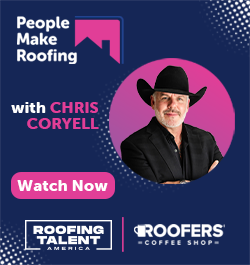

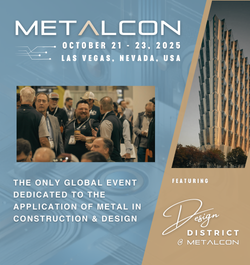









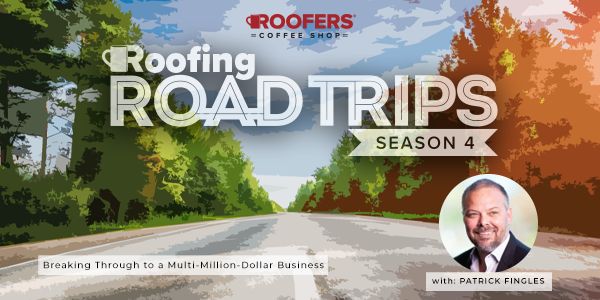
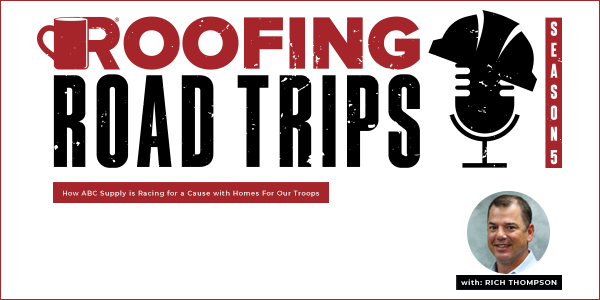
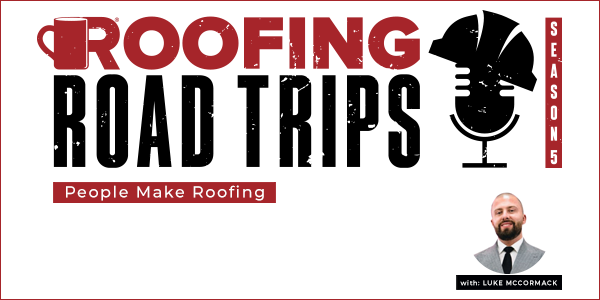
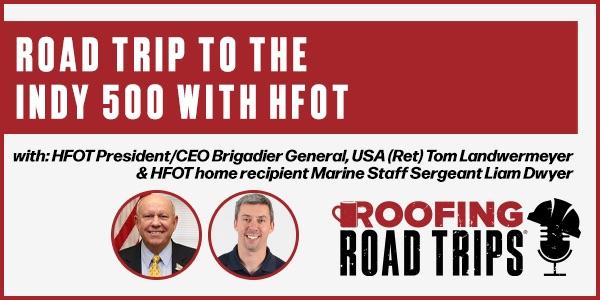



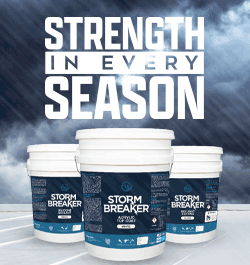


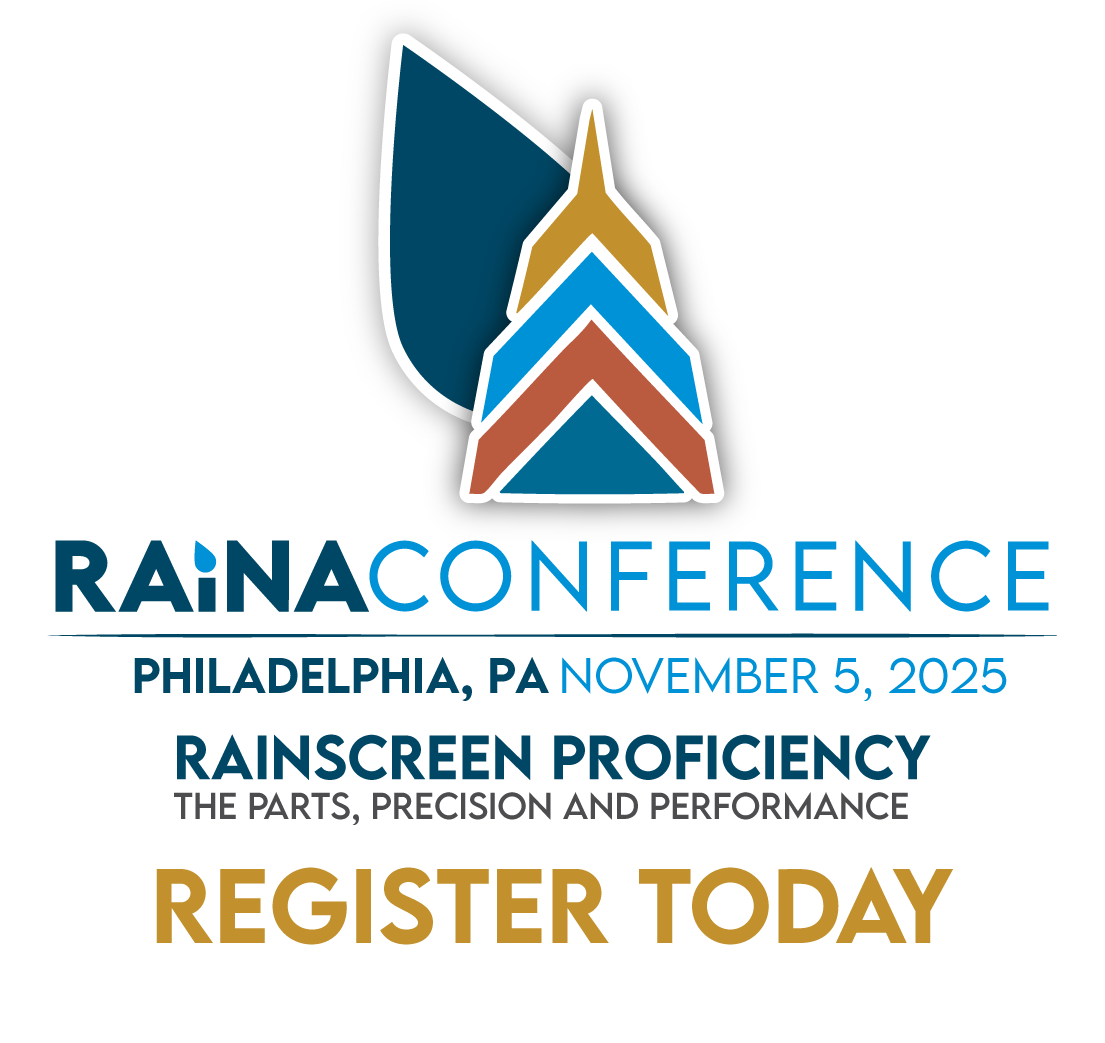
Comments
Leave a Reply
Have an account? Login to leave a comment!
Sign In